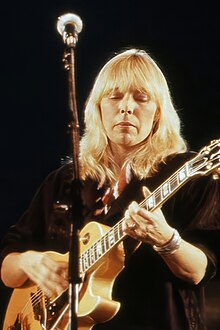
The music of Sweden shares roots with its neighbouring countries in Scandinavia, as well as Eastern Europe, including polka, schottische, waltz, polska and mazurka. The Swedish fiddle and nyckelharpa are among the most common Swedish folk instruments. The instrumental genre is the biggest one in Sweden. In the 1960s, Swedish youth sparked a roots revival in Swedish folk culture. Many joined Spelmanslag and performed on mainstream radio and TV. They focused on instrumental polska music, with vocals and influences from other traditional genres becoming more prominent since the 1990s. By 1970, the "dansband" culture also began. Music in Sweden is a vital part of Swedish culture, as evidenced by the national success of musical shows like Allsång på Skansen and Melodifestivalen.

Cajun music, an emblematic music of Louisiana played by the Cajuns, is rooted in the ballads of the French-speaking Acadians of Canada. Although they are two separate genres, Cajun music is often mentioned in tandem with the Creole-based zydeco music. Both are from southwest Louisiana and share French and African origins. These French Louisiana sounds have influenced American popular music for many decades, especially country music, and have influenced pop culture through mass media, such as television commercials.

The music of Canada reflects the diverse influences that have shaped the country. Indigenous Peoples, the Irish, British, and the French have all made unique contributions to the musical heritage of Canada. The music has also subsequently been influenced by American culture because of the proximity between the two countries. Since French explorer Samuel de Champlain arrived in 1605 and established the first permanent French settlements at Port Royal and Québec in 1608, the country has produced its own composers, musicians and ensembles.

In traditional Sámi music songs and joiks are important musical expressions of the Sámi people and Sámi languages. The Sámi also use a variety of musical instruments, some unique to the Sámi, some traditional Scandinavian, and some modern introductions.

Buffy Sainte-Marie, is an American singer-songwriter, musician, and social activist.

Indigenous music of Canada encompasses a wide variety of musical genres created by Aboriginal Canadians. Before European settlers came to what is now Canada, the region was occupied by many First Nations, including the West Coast Salish and Haida, the centrally located Iroquois, Blackfoot and Huron, the Dene to the North, and the Innu and Mi'kmaq in the East and the Cree in the North. Each of the indigenous communities had their own unique musical traditions. Chanting – singing is widely popular and most use a variety of musical instruments.
As a cosmopolitan province, Quebec is a home to various genres of music, ranging from folk to hip hop. Music has played an important role in Quebecer culture. In the 1920's and 30's, singer/songwriter Madam Bolduc performed comedic songs in a folk style with Irish influences. Quebec's popular artists of the last century include Félix Leclerc (1950's), Gilles Vigneault (1960's–present), Kate and Anna McGarrigle (1970's–present) and Céline Dion (1980's–present).'

Tanya Tagaq, also credited as Tagaq, is a Canadian Inuk throat singer, songwriter, novelist, actor, and visual artist from Cambridge Bay (Iqaluktuuttiaq), Nunavut, Canada, on the south coast of Victoria Island.

Kashtin were a Canadian folk rock duo in the 1980s and 1990s, one of the most commercially successful and famous musical groups in First Nations history.

Rock music of Canada is a wide and diverse part of the general music of Canada, beginning with American and British style rock and roll in the mid-20th century. Since then Canada has had a considerable impact on the development of the modern popular music called rock. Canada has produced many of the genre's most significant groups and performers, while contributing substantively to the development of the most popular subgenres, which include pop rock, progressive rock, country rock, folk rock, hard rock, punk rock, heavy metal and indie rock.

Murray Edward McLauchlan, is a Canadian singer, songwriter, guitarist, pianist, and harmonica player. He is best known for his Canadian hits "The Farmer's Song," "Whispering Rain," and "Down by the Henry Moore".
Celtic fusion is an umbrella term for any modern music which incorporates influences considered "Celtic", or Celtic music which incorporates modern music. It is a syncretic musical tradition which borrows freely from the perceived "Celtic" musical traditions of all the Celtic nations, as well as from all styles of popular music, it is thus sometimes associated with the Pan-Celtic movement. Celtic fusion may or may not include authentic traditional music from any one tradition under the Celtic umbrella, but its common characteristic is the inspiration by Celtic identity.
Americana is an amalgam of American music formed by the confluence of the shared and varied traditions that make up the musical ethos of the United States of America, with particular emphasis on music historically developed in the American South.

Contemporary folk music refers to a wide variety of genres that emerged in the mid-20th century and afterwards which were associated with traditional folk music. Starting in the mid-20th century, a new form of popular folk music evolved from traditional folk music. This process and period is called the (second) folk revival and reached a zenith in the 1960s. The most common name for this new form of music is also "folk music", but is often called "contemporary folk music" or "folk revival music" to make the distinction. The transition was somewhat centered in the United States and is also called the American folk music revival. Fusion genres such as folk rock and others also evolved within this phenomenon. While contemporary folk music is a genre generally distinct from traditional folk music, it often shares the same English name, performers and venues as traditional folk music; even individual songs may be a blend of the two.

Canadian music genres identifies musical sounds as belonging to a particular category and type of music that can be distinguished from other types of music made by Canadians. The music of Canada has reflected the multi-cultural influences that have shaped the country. First Nations people, the French, the British, the Americans and many others nationalities have all made unique contributions to the musical genres of Canada. During the swing boom of the late 1930s and early 1940s, Canada produced such notable bandleaders as Ellis McLintock, Bert Niosi, Jimmy Davidson, and Mart Kenney. In the 1940s, Bert Niosi and Oscar Peterson became widely known. Canada has also produced a number of respected classical music ensembles, including the Montreal Symphony Orchestra and the Toronto Symphony Orchestra. Canadian rock describes a wide and diverse variety of music produced by Canadians, with the most notable Canadian rock band being Rush, who currently place fifth behind The Beatles, The Rolling Stones, KISS and Aerosmith for the most consecutive gold and platinum albums by a rock band. The Canadian hip hop scene was first established in the 1980s. Some of the most well known Canadian rappers and hip-hop artists include Drake and Maestro Fresh-Wes.
Music of Canadian Cultures is a wide and diverse accumulation of music from many different individual communities all across Canada. With Canada being vast in size, the country throughout its history has had regional music scenes. The music of Canada has reflected the multi-cultural influences that have shaped the country. First Nations people, the French, the British, the United States and many others nationalities have all made unique contributions to the musical heritage of Canada
"Cod'ine" is a contemporary folk song by the singer-songwriter Buffy Sainte-Marie. Considered one of the earliest anti-drug songs, Sainte-Marie wrote the piece after becoming addicted to codeine which she had been given for a bronchial infection. She recorded it for her debut album, It's My Way! (1964).

Willie Thrasher is a Canadian Inuvialuit musician from Aklavik, Northwest Territories. He has recorded both as a solo artist, and as a member of several bands, including The Cordells, and Red Cedar, with Morley Loon. Thrasher has advocated for Inuit and First Nations issues for much of his career.

William Prince is a Canadian folk and country singer-songwriter based in Winnipeg, Manitoba.

Medicine Songs is a studio album by Buffy Sainte-Marie, released November 10, 2017, on True North Records. The album includes both new material and contemporary re-recordings of some of her older songs.















